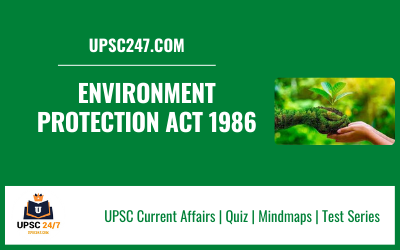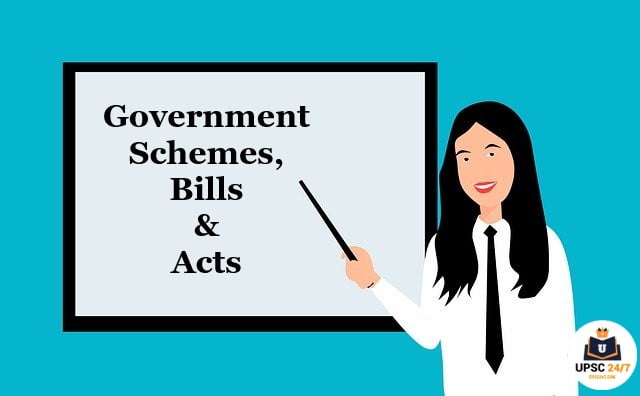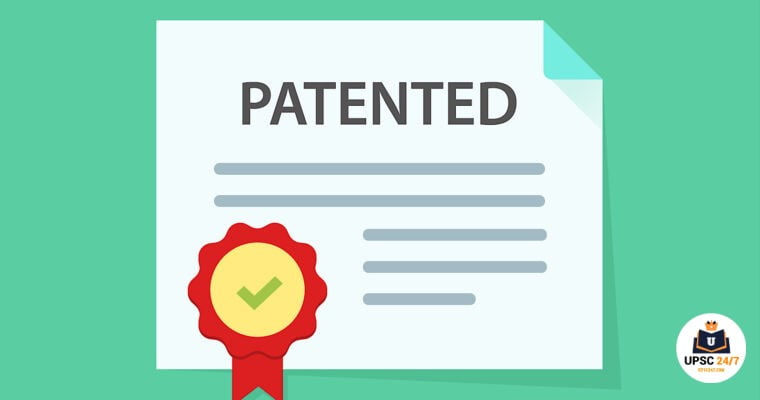Environment Protection Act 1986 | UPSC – Environment Protection Act, 1986 Act of the Parliament of India. In the wake of the Bhopal gas Tragedy or Bhopal Disaster, the [Government of India] enacted the Environment Protection Act of 1986 under Article 253 of the Constitution. Passed in May 1986, it came into force on 19 November 1986.
About Environment Protection Act 1986 :
In this Act, main emphasis is given to “Environment”, defined to include water, air and land and the inter-relationships which exist among water, air and land and human beings and other living creatures, plants, micro-organisms and property.
- The Main Reason For This Act Enacting Was Bhopal Gas Tragedy 1984 .
- Due To Bhopal Gas tragedy, the Government of India enacted the Environment Protection Act of 1986 under Article 253 of the Constitution.
- The act got passed in March 1986.
- The Environment Protection Act on 19 November 1986 came into force.
- The Act was last amended in 1991.
- The main purpose of the Act is to implement the decisions of the United Nations Conference on the Human Environment of 1972.
- In this Act, the main emphasis is given to “environment”, “pollution”, “pollutants”, and “hazardous substances.
- The Act is an “umbrella” Act For Various Acts Which Are Enacted For Environment Protection, Example – Water Act And Air Act
- Through this Act Central Government gets full power for the purpose of protecting and improving the quality of the environment.
- The act is based on the polluter pays principle.
- The act gives wide-ranging powers to the Central Government to frame rules for environmental conservation.
- Central Government has powers to state the requirement of public participation in the process of environmental protection.

The Main Keywords of Environment Protection Act Definition Are :
| Enviornment |
|
| Environmental Pollutant |
|
| Environmental Pollution |
|
| Hazardous Substances |
|
Main Aims and Objectives of the Environment Act
- Implementation of the decisions made in June 1972 at Stockholm at the United Nation Conference on the Human Environment.
- Government protection authority creation.
- Forming coordination of activities of different agencies which are operating under the existing law.
- Enacting regular laws for environmental protection which have the probability of being unfolded in areas of severe environmental threats.
- Providing punishment to those promoting endangerment to the human environment, safety and health.
- Sustainable development of the environment.
- Achieving the purpose of the Act and protection of life under Article 21 of the Indian Constitution.
Environment Protection Act 1986 Main Provisions :
- The Act explicitly prohibits discharges of environmental pollutants in excess of prescribed regulatory standards.
- There is also a specific prohibition against handling hazardous substances except those in compliance with regulatory procedures and standards.
- The Act provides provision for penalties.
- For each failure or contravention, the punishment included a prison term up to five years or fine up to Rs. 1 lakh, or both.
- The Act imposed an additional fine of up to Rs. 5,000 for every day of continuing violation.
- If a failure or contravention occurs for more than one year, offender may be punished with imprisonment which may be extended to seven years.
- Section 19 provides that any person, in addition to authorized government officials, may file a complaint with a court alleging an offence under the Act.
- This “Citizens’ Suit” provision requires that the person has to give notice of not less than 60 days of the alleged offence of pollution to the Central Government.
The Act empowers the centre to “take all such measures as it deems necessary.
By virtue of this Act, Central Government has armed itself with considerable powers which include,
- Coordination of action by state,
- Planning and execution of nationwide programmes,
- Laying down environmental quality standards, especially those governing emission or discharge of environmental pollutants,
- Placing restriction on the location of industries and so on.
- Authority to issue direct orders, included orders to close, prohibit or regulate any industry.
- Power of entry for examination, testing of equipment and other purposes and power to analyse the sample of air, water, soil or any other substance from any place.
Rules Under Environment Protection Act 1986 :
- Rules 1989 for regulating GM Crops
- EIA rules, 2006
- Eco-Sensitive Area(Zone) rules, 1988
- CRZ rules, 2018 based on Shailesh Nayak Committee
Some Of The Most Important Judgements & Cases Related To Environment Protection Act
| Sustainable Development |
|
| Water Pollution |
|
| Air Pollution |
|
| Public Trust and Right to Life |
|
| Wildlife and Forest Protection Case |
|
| Environmental Awareness and Education Case |
|
List Of Environment Pollution Control Act
There are several pollution control Acts in India. Following are those:
- The Water (Prevention and Control of Pollution) Act- 1974.
- Water (Prevention and Control of Pollution) Rules, 1975.
- Transaction of Business) Rules, 1975.
- Water (Prevention and Control of Pollution) Cess Act, 1977.
- Water (Prevention and Control of Pollution) Cess Rules, 1978.
- The Air (Prevention and Control of Pollution) Act- 1981.
- Air (Prevention and Control of Pollution) Rules, 1982.
- Air (Prevention and Control of Pollution Union Territories) Rules, 1983.
- The Environment (Protection) Act-1986.
- Manufacture, Storage and Import of Hazardous Chemicals Rules, 1989.
- Hazardous Waste (Management & Handling) Rules, 1989.
- National Environment Tribunal Act, 1995.
- Central Board for the Prevention and Control of Water Pollution (Procedure for
- Chemical Accidents (Emergency Planning Preparedness and Response) Rules, 1996.
- Bio-Medical Waste (Management and Handling) Rules, 1998.
- Recycled Plastics Manufacture and Usage Rules, 1999.
- Noise Pollution (Regulation and Control) Rules, 2000.








